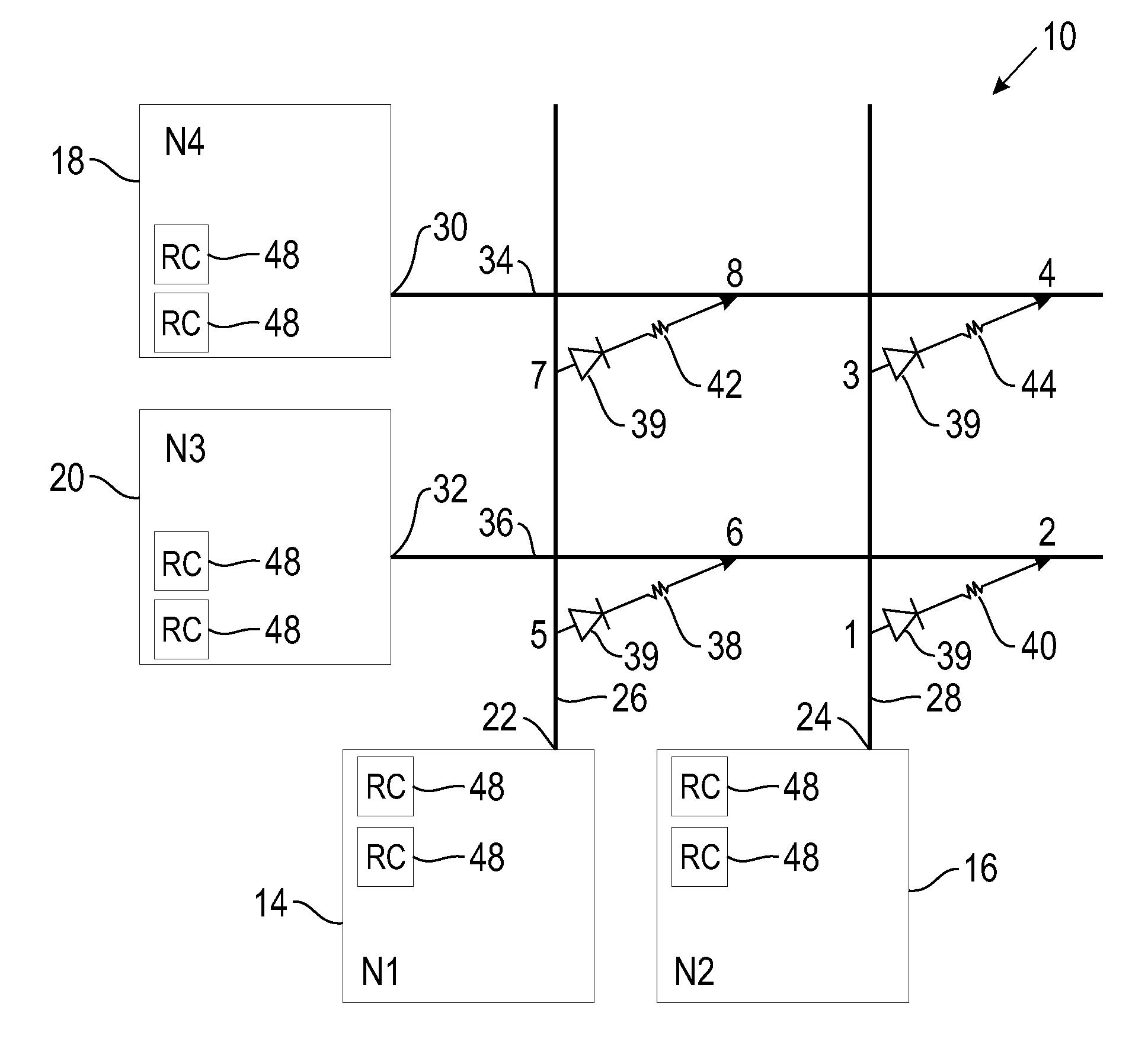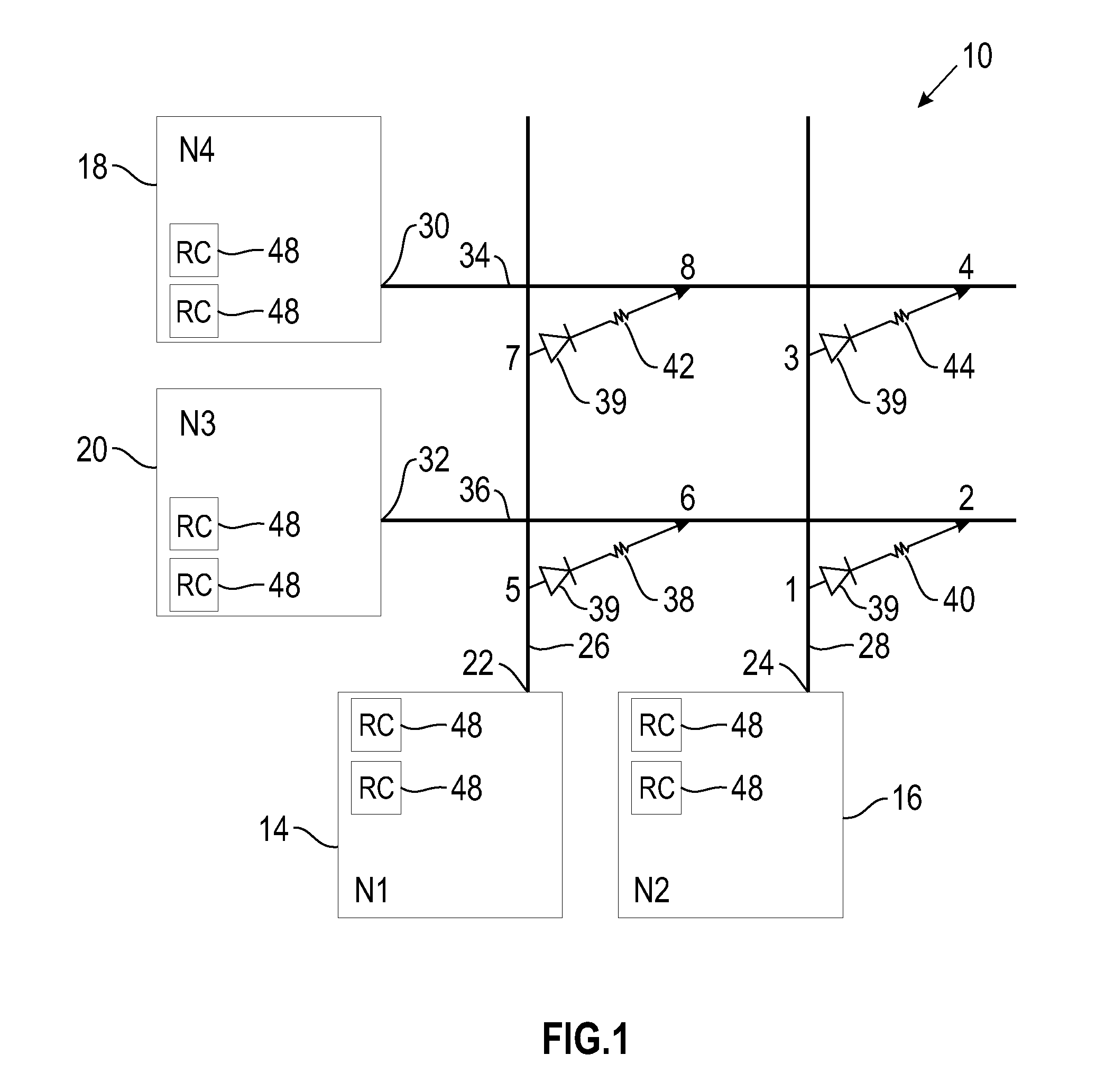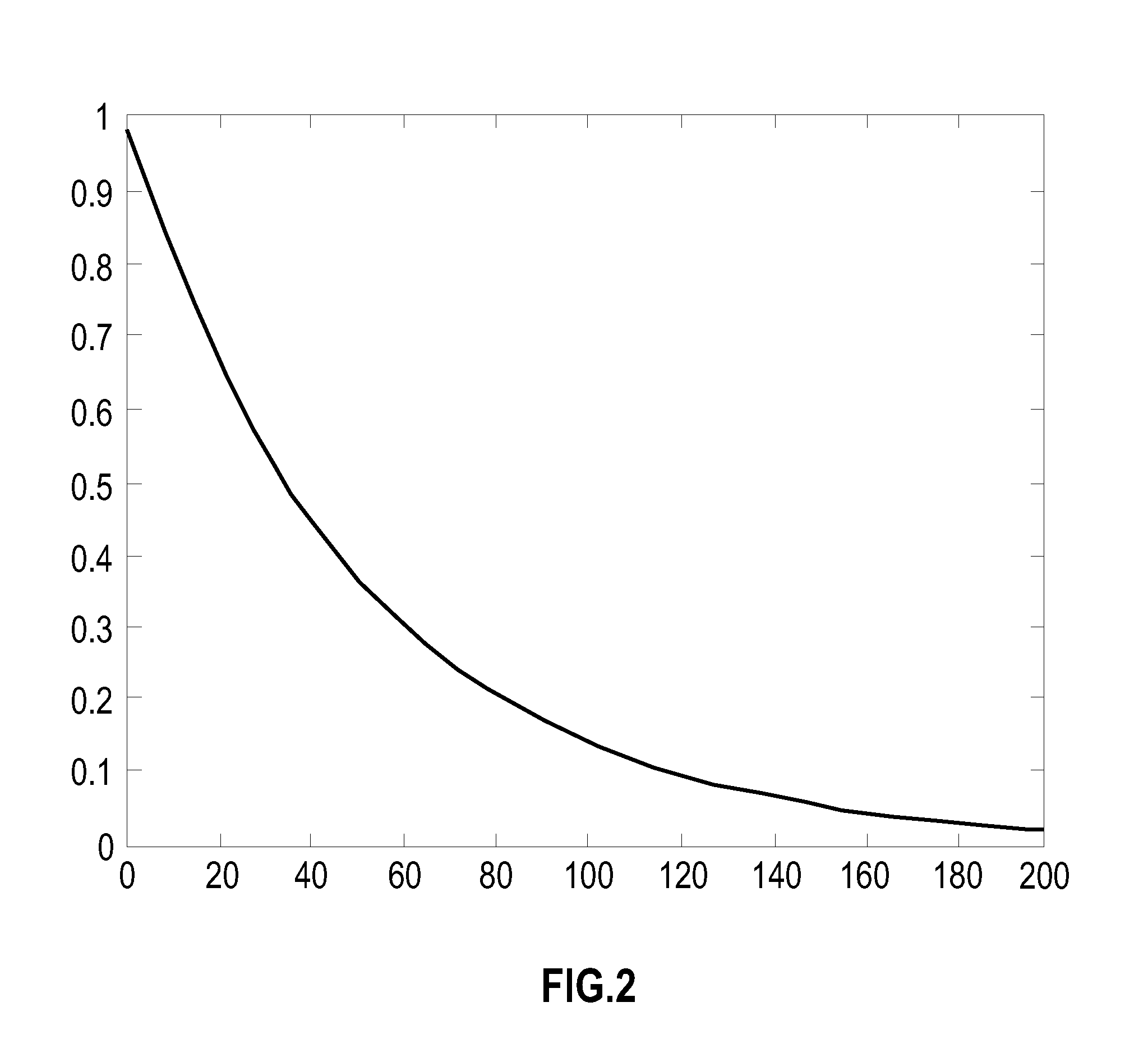Producing spike-timing dependent plasticity in an ultra-dense synapse cross-bar array
a cross-bar array and plasticity technology, applied in the field of neuromorphic systems, can solve the problems that neuromorphic systems generally do not utilize traditional digital, and achieve the effect of producing spike-timing dependent plasticity, increasing or decreasing the conductance of variable-state resistors
- Summary
- Abstract
- Description
- Claims
- Application Information
AI Technical Summary
Benefits of technology
Problems solved by technology
Method used
Image
Examples
Embodiment Construction
[0027]Embodiments of the invention provide neuromorphic systems, including ultra-dense synapse cross-bar arrays which implement spike-timing dependent plasticity (STDP). Embodiments include analog variable state resistor amplitude modulated STDP versions and binary variable state resistor probability modulated STDP versions. Disclosed embodiments include systems with access devices and systems without access devices. These embodiments exhibit significantly improved update rates in the tens of Gigahertz range.
[0028]Referring now to FIG. 1, there is shown a diagram of a neuromorphic system having an ultra-dense cross-bar array in accordance with an embodiment of the invention. The term “ultra-dense cross-bar array” as used herein refers to cross-bar arrays that may have a pitch in the range of about 0.1 nm to 10 μm. The neuromorphic system 10 includes a cross-bar array 12 having a plurality of neurons 14, 16, 18 and 20. These neurons are also referred to herein as “electronic neurons”...
PUM
 Login to View More
Login to View More Abstract
Description
Claims
Application Information
 Login to View More
Login to View More - R&D
- Intellectual Property
- Life Sciences
- Materials
- Tech Scout
- Unparalleled Data Quality
- Higher Quality Content
- 60% Fewer Hallucinations
Browse by: Latest US Patents, China's latest patents, Technical Efficacy Thesaurus, Application Domain, Technology Topic, Popular Technical Reports.
© 2025 PatSnap. All rights reserved.Legal|Privacy policy|Modern Slavery Act Transparency Statement|Sitemap|About US| Contact US: help@patsnap.com



